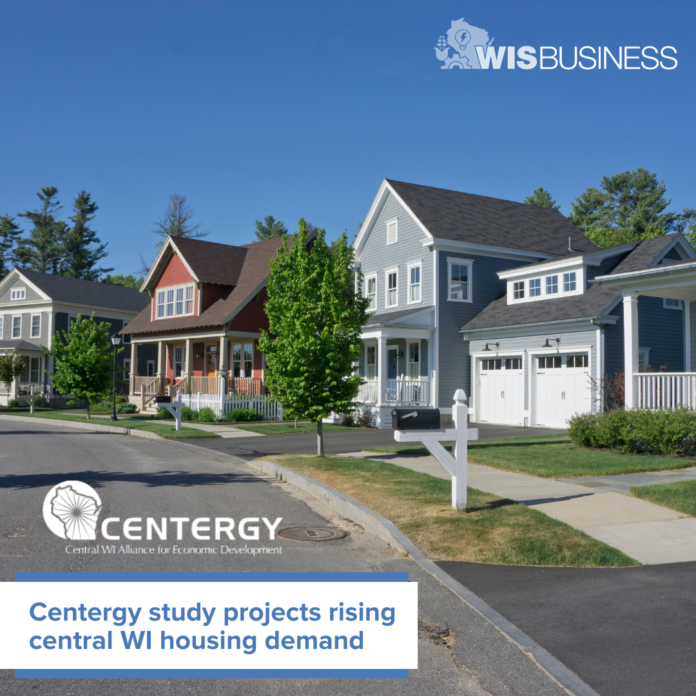A five-county region in central Wisconsin will need more than 11,000 additional housing units by 2040 to meet projected demand, according to a study from economic development group Centergy.
The organization, which focuses on Adams, Lincoln, Marathon, Portage and Wood counties, yesterday released its Regional Housing Study. It highlights the “growing need for affordable, workforce-ready housing” across these counties even as changing economic trends have led to fewer residents than previously expected.
The study references earlier figures from the state Department of Administration, which in 2013 projected the region would have 142,506 households by 2020. An updated estimate for 2023 puts that figure at 140,380, reflecting that the region didn’t grow as quickly as initially expected. But the region did see an “unexpected population bump” between 2020 and 2024, authors note.
“Even though the estimated number of future households was reduced for all five counties, there is still a strong regional demand for housing units both immediately and by 2030, followed by continued but waning demand through 2040,” they wrote.
Based on the latest figures, the region’s current housing need stands at 4,677 units. That figure is 3,659 for 2030, then 2,178 for 2035, and 892 for 2040, putting total projected demand by then at 11,406.
Of the region’s five counties, the greatest demand is seen in Marathon County, which has nearly twice as many residents as any other Centergy county with about 57,000 in 2023. Its immediate housing need for this year is 2,217 units, and total demand by 2040 is expected to hit 6,336 units, making up more than half of the region’s total demand.
Still, authors point out that new units being added anywhere in the area will help address demand.
“This is because fewer people need to commute long distances if more housing is available, as reflected in the large share of workers who both live and work within the Region,” they wrote.
The report highlights several challenges for housing affordability in the area, including household incomes behind those of larger cities, a high share of retired residents, extensive seasonal housing and a shortage of higher-end housing.
“The result is that households of various incomes compete over similar housing units, driving up prices for low- and middle-income households,” authors wrote. “It also makes the region less desirable for developers who work in larger cities, as lower prices make margins smaller as construction costs remain high.”
To expedite the creation of more housing there, the report lays out numerous policy approaches, categorized into low-effort, medium-effort and high-effort. These include various adjustments to zoning and permitting to reduce barriers to construction, educational resources for homebuyers as well as developers and landlords, housing trust funds, and employer-sponsored housing.
“There is an opportunity for local and county government to incentivize this style of development,” the authors wrote.
Going forward, they expect greater demand in the region for housing that accommodates disabilities as the population gets older. And as the homes themselves get older, some may “no longer be worth investing in renovating,” as some of the projected demand will come from replacing them.
At the same time, they say more widespread remote work and demand for homes for seasonal visitors could drive more residents to the region.
See the study.






